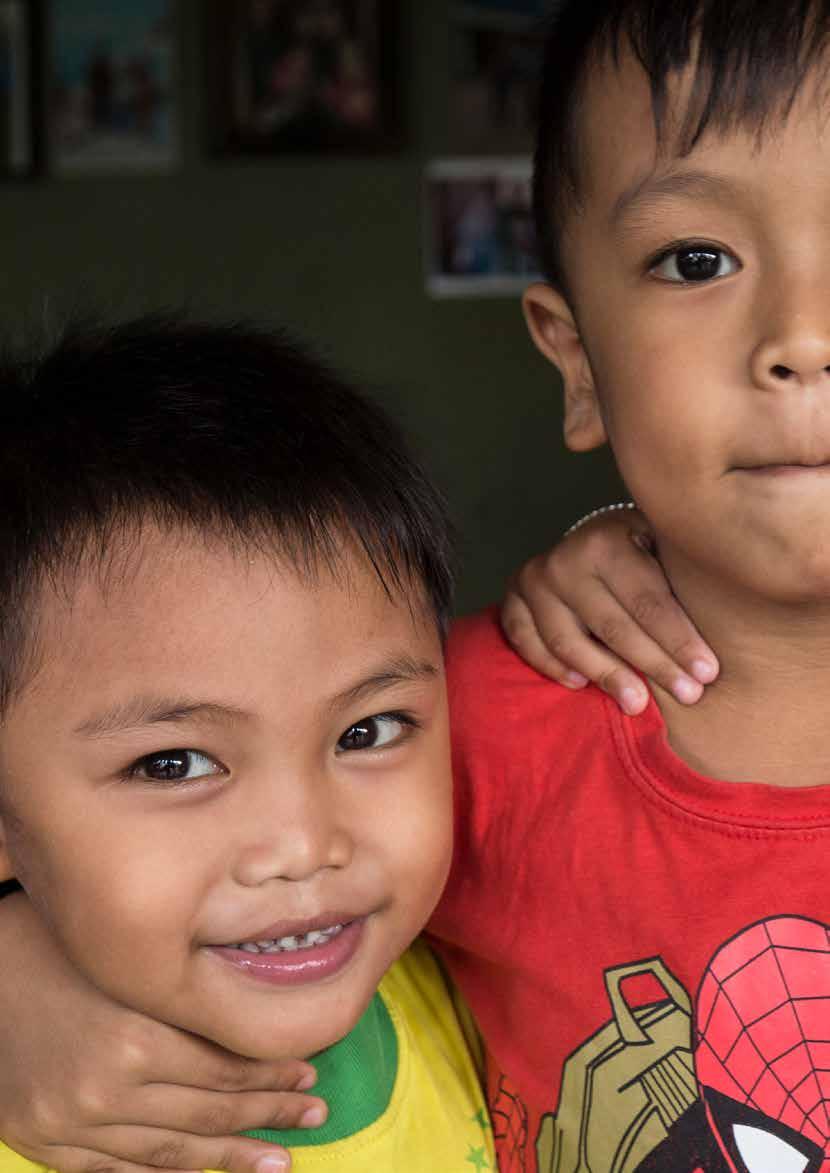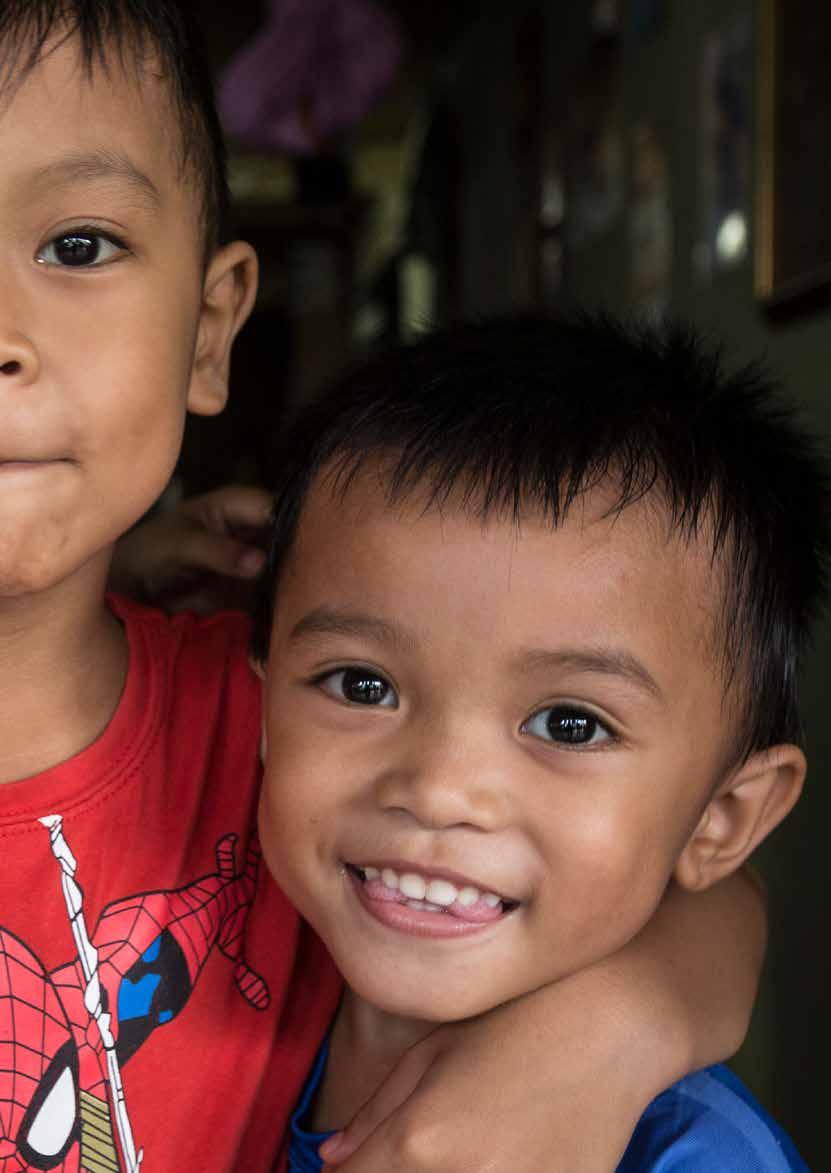
10 minute read
Introduction
1 Introduction
The World Health Organization (WHO) Western Pacific Region is home to nearly 1.9 billion people, or more than one quarter of the world’s population, spread across 27 countries and 10 areas.
Advertisement
This document, For the Future: Towards the Healthiest and Safest Region, sets out thematic priorities for WHO work in the Western Pacific Region for the next five years, as well as a series of ideas for collectively responding to current and future health challenges. It was developed following extensive consultations with Member States, partners and WHO staff in the Western Pacific Region between April and October 2019.
The shared vision articulated in this document is simple: acting today to address the challenges of tomorrow, with the goal of making the Western Pacific Region the healthiest and safest region.
A changing Region, a changing world
The Western Pacific Region is rapidly changing – economically, socially and environmentally. The last half century has brought more change here than in any other region in the world, and as a result, today people in this Region live longer and healthier lives, and fewer women, men, girls and boys are dying of avoidable diseases. Between 1990 and 2017, the total gross domestic product of countries in the Western Pacific Region tripled. In many fields, the Region has emerged as a dynamic, innovative and ambitious global leader – for example, in reducing tobacco use, embracing new technology and controlling emerging infectious disease. Improvements in health and longer life expectancy have driven astounding economic and social development in many countries, and the health sector is increasingly seen less as a consumer of resources and more as an engine of progress and productivity – and a potentially powerful source of revenue. As countries strive to reap the benefits of economic growth, ministries of health have an opportunity to contribute to realizing their country’s full potential – through improving health, well-being and health equity.
Yet, this progress and growing prosperity over recent decades have also spurred new, shared health challenges for the Region:
Growing mobility and connectivity have increased the ever-present risk of health emergencies and the emergence of new health security threats. Two of the last four influenza pandemics began in this Region, and there is every chance the next one will, too.
Changing consumption patterns, rapid urbanization and greater longevity have contributed to an increase in noncommunicable diseases (NCDs), which now kill four in every five of us – though with striking differences between genders. At the same time, some countries’ populations are rapidly getting older: half a century ago, fewer than one in 20 people in the Region were aged 65 or older; 20 years from now that proportion will be more than one in four. Environmental and climate changes are affecting the fundamentals – like the air we breathe, the water we drink and the ground under our feet – which, for some communities in the Pacific, is disappearing before their eyes, as sea levels rise. More frequent natural disasters associated with climate change are adding to the Region’s trauma burden. And at the same time, air pollution now causes some 2.2 million lives to be lost in our Region every year.
For many people, their country’s economic growth and population shifts, including urbanization, have created life opportunities that were unimaginable a generation ago. Others, however, risk being left behind as rapid development has also fuelled greater health and social inequity, poverty, gender inequality and disadvantage – all of which are clearly associated with poor health outcomes. Gender affects our health, and it creates inequities in health outcomes not only between, but also within countries: in the Western Pacific, while women live longer than men, they are more likely to experience disability. One in three women in the Region has experienced violence; on the other hand, men in this Region are three times more likely than women to die from a road traffic injury. Progress is not only uneven within countries, but also among countries in different parts of the Region: few Pacific island countries, for example, are experiencing economic growth at the rate of Asian economies, with implications for their health and health systems development.
As well as being incredibly dynamic, our Region is also extremely diverse. We are home to the world’s most populous country and some of its smallest. Our Region includes highly advanced, industrialized economies, as well as economies in transition; some countries have federalized systems of government, while others are highly decentralized. Several of the world’s largest megacities are in the Western Pacific, as well as some of the smallest and most remote island communities. In our efforts to improve overall health, we must bear in mind each country’s unique needs and circumstances – and be prepared to address health inequities not only among, but also within, countries.
While each country is focused on realizing its own development ambitions – based on its unique context and circumstances – the strength of the Western Pacific Region in health lies in its pursuit of a collective agenda. Countries in the Region share a joint ambition to make health a centrepiece of social and economic development, and understand that this ambition can be best realized in solidarity. Health challenges do not respect national borders: pathogens and disease-carrying parasites do not carry passports; countries share an increasingly mobile workforce, and with that increasingly similar disease patterns; and environmental challenges go beyond individual countries. In all of these areas, collective action is needed. But while health is increasingly global, bilateral donors face domestic pressure and scrutiny about the efficient and effective use of their international development assistance.
The health challenges we face today and will face tomorrow are unprecedented in scale and complexity. To address them, we need greater creativity, more innovation and stronger partnerships outside the health sector. These are challenges, but change and uncertainty can also create unprecedented opportunity: for instance, harnessing technology can revolutionize the provision of health care. As economies develop, investing in health can supercharge growth and productivity, as well as ensure those gains are more equitably shared. And planning ahead for demographic shifts such as population ageing creates opportunities for people to live not only long, but also healthy, productive and happy lives.
There is vast experience, expertise and ingenuity in the Western Pacific Region. There are many opportunities for, and a longstanding tradition of, countries sharing experiences, learning from one another, and working together towards shared goals and the creation of global goods. Indeed, this tradition of cooperation has been the foundation for many of the Region’s significant health achievements in recent decades: being declared polio-free in 2000; dramatically reducing the rate of mothers and their babies dying during or soon after birth; massively reducing the incidence of tuberculosis (TB) and the number of people who die from it; eliminating a number of so-called neglected tropical diseases (NTDs); and the declining use of tobacco.
Facing the future with optimism, and building on our Region’s tradition of solidarity and history of health achievements, this document is about how WHO and Member States write the next chapter of the Western Pacific Region’s story: to become the healthiest and safest region in the world. The health challenges we face today and will face tomorrow are unprecedented in scale and complexity. To address them, we need greater creativity, more innovation and stronger partnerships outside the health sector.
WHO in the Western Pacific Region and the global agenda
A changing world has implications both for how Member States pursue their own ambitions for health, and for how WHO supports them in doing so. As the challenges Member States face evolve, so must WHO – both in terms of what we focus on (thematic or strategic priorities), and how we work (operational shifts, or new ways of thinking and working). Over the past decade, WHO has evolved from an “external adviser” on what to do, to being a partner in every country on the “how to” of improving health. WHO must continue to be a trusted partner in driving technical excellence, supporting Member States in realizing their own health and development potential, and facilitating progress towards our common agenda of becoming the safest and healthiest region.
The change in leadership in the Western Pacific Region coincides with a new global set of strategic priorities and goals, endorsed by all WHO Member States and encapsulated in WHO’s Thirteenth General Programme of Work (GPW 13). GPW 13 sets out a strategy for WHO that encapsulates the health dimension of the 2030 Agenda for Sustainable Development by focusing on keeping the world safe, promoting health and serving the vulnerable.
The associated organizational transformation process, which is also aligned with the broader United Nations reforms inspired by the Sustainable Development Goals (SDGs), aims to make WHO “a modern organization that works seamlessly to make a measurable difference in people’s health at the country level”. The global transformation process builds on identified best practices from within the Organization, many of which stemmed from reforms in the Western Pacific Region, recognizing the intensive focus on country impact and organizational excellence over the last decade under the leadership of the former Regional Director, Dr Shin Young-soo. During his tenure, the Western Pacific Region earned a reputation as a leader and an early adopter of change within WHO.
Both the United Nations reform process and WHO’s broader organizational transformation have been adopted and supported by Member States as setting the right frame for increasing the relevance and effectiveness of the United Nations and WHO as partners in the realization of their own health and development ambitions. At the same time, Member States now expect that the strategic goals and shifts articulated in GPW 13 and in the global transformation will be “operationalized” to meet the needs of each of WHO’s six regions. In other words, they will be translated into concrete actions in the Western Pacific, based on the specific circumstances of the Region, capitalizing on its cultural, social and economic assets, and
fundamentally geared towards delivering better health outcomes on the ground. It is a change agenda that looks to the future to shape responses to health challenges of the present.
As in the past, WHO in the Western Pacific Region is committed to leadership that delivers the greatest impact for countries. Our staff are dedicated to supporting countries in delivering the shared ambition of becoming the healthiest and safest Region: we are committed to putting people’s health interests first; to promoting health as a right for all, not a luxury for a few; and we strive to be trusted servants of public health, professionals committed to excellence in health, people of integrity, and collaborative colleagues and partners.
Member States have an expectation that WHO is “with each country”. We are committed to supporting each country’s health sector leaders, recognizing that while some challenges are common across the Region, every country’s context – and therefore the manifestation of these challenges in each country – is different.
Fig. 2. United Nations reform, GPW 13 and the Western Pacific Region’s shared vision
Member States
United Nations reform SDGs WHO global transformation GPW13 “Triple Billion” targets WHO Western Pacific Region — For the Future
Health security NCDs and Climate change Reaching the Ageing and health unreached
United Nations reform
2009 Country focus SDGs 2019 For the Future
Make the Western Pacific the healthiest and safest region Make WHO a modern organization, working seamlessly to make a difference at the country level Reposition the UN development system to support countries deliver on the SDGs

Epidemiological and demographic shifts within the Region over recent decades mean new challenges are taking on greater importance.








